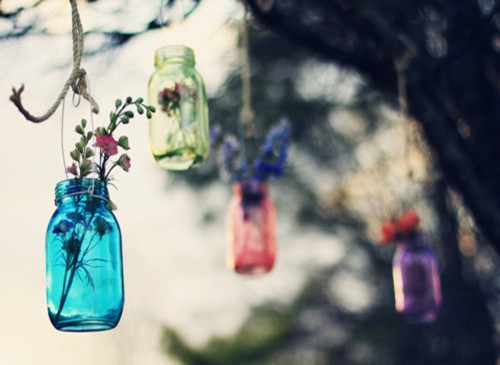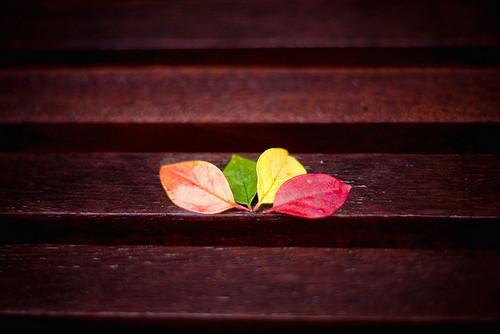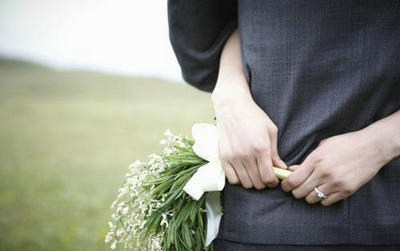
重庆红岩革命纪念馆及歌乐山纪念馆的导游词
这里有详细的答案:
重庆歌乐山革命烈士陵园和红岩革命纪念馆导游词
重庆歌乐山烈士陵园位于沙坪坝区歌乐山麓,系国民党政府时期“国民党军事调查统计局”(简称“军统局”)总部、电台、监狱所在地。
二战后期,曾在此建“中美特种技术合作所”。
歌乐山烈士墓、烈士纪念碑和展览馆于1954年修建,1984年改名。
系国民党政府时期“国民党军事调查统计局”(简称“军统局”)总部、电台、监狱所在地。
二战后期,曾在此建“中美特种技术合作所”,1984年7月改称现名。
“中美特种技术合作所”东西长约7公里,纵横约10公里。
在这个“特区”周围完全用碉堡、岗亭和铁丝封锁着,任何人也不能通行。
它名义上是以中美联合对日作间谍战、中美交换情报为幌子。
实际上,完全是一个训练法西斯刽子手的机构,对中国共产党员和搞日民主人士进行大量的搜捕和迫害。
国民党统治时期,这里是关押和杀害革命志士的人间地狱。
“皖南事变”后,新四军军长叶挺将军曾被囚禁于此,著名共产党人罗世文、车耀先、江竹筠,爱国将领杨虎城、黄显声等均在这里惨遭杀害。
1949年11月27日,国民党政权撤离大陆前夕,对囚禁在这里的300多位革命人士实行集体大屠杀,制造了震惊中外的“一一·二七”大血案。
解放后,在这个“特区”内,办起了工厂、农场和学校,原平的白公馆、渣滓洞两个在监狱已开辟为展览馆,陈列了当年的实物、图片等。
如今,每年有上百万游人来此参观、凭吊烈士英灵。
1955年重庆市人民政府修建了烈士墓园和烈士纪念碑,占地698平方米。
1956年四川省人民政府将这里定为省文物保护单位。
1963年,重庆中美合作所美蒋罪行展览馆成立,恢复了白公馆、渣滓洞的原貌,于1985年更名为重庆歌乐山革命烈士陵园。
1988年,这里被国务院列为全国重点文物保护单位。
1993年增挂重庆歌乐山革命纪念馆馆牌。
重庆歌乐山革命烈士陵园1996年被中央六部委局授予“全国中小学爱国主义教育基地”称号;1997年被中宣部列为全国百个爱国主义教育示范基地。
景点旅游提示 门票: 渣滓洞:5元\\\/人;白公馆:5元\\\/人;松林坡:5元\\\/人;梅园:2元\\\/人;陈列大厅(含半景画):5元\\\/人 到达方式:重庆市内乘坐215、217、221、227、265、801等路公交车均可到达。
开放时间:08:30到17:00 重庆红岩革命纪念馆,位于重庆市嘉陵江畔,包括红岩村13号、曾家岩 50号、 桂园、《新华日报》旧址等。
它们都是抗日战争时期中共中央南方局的活动基地,是我党在国民党统治区巩固和发展抗日民族统一战线、领导人民群众进行 革命斗争的中心。
因业绩卓著,故设馆加以纪念。
1938年10月,日本侵略军占领广州、武汉、国民党政府迁都重庆。
作为中 共代表的周恩来,以及董必武、林伯渠、吴玉章、叶剑英、王若飞、邓颖超等 同志也相继抵达,组成了以周恩来同志为书记的中共中央南方局。
当时的南方 局和八路军驻重庆办事处都设在红岩村。
1945年,同志从延安到重庆与 国民党进行谈判的43天内,也住在红岩村13号。
因此,当年的红岩村成了举世 瞩目的政治活动中心。
红岩村13号,为3层简易建筑,是由当时南方局和八路军驻重庆办事必机 关工作人员动手改建的。
为适应在敌特包围中斗争的需要,设置奇特:右侧传 达室装置了脚踏电铃,以便在紧急时向内部发出通知;传达室门后掩蔽着一个 通向二楼的小门,大门开时,即掩了小门。
、周恩来同志和南方局的领 导人在此办公住宿的房间里陈列着许多革命文物。
曾家岩50号,是当时南方局在重庆市城内租用的办公处。
它是一幢3层楼 房,右侧是国民党特务头子戴笠的公馆;左侧有国民党警察局的派出所,这 幢楼挺立在中间。
楼的二层有两个房间分别作为周恩来、董必武同志的办公 室兼宿舍,底层和三层为南方局其他同志用。
1945年8月,同志在重庆 与国民党谈判期间,曾在底楼会议室接见过中外人士。
周恩来同志会见各界 人士和中外记者也常在这里。
桂园,是同志在“重庆谈判”期间市内办公、会客的地方。
它是 一座砖楼小院,位于曾家岩50号右侧200米处,原是国民党谈判代表之一张 治中先生的公馆,为了同志的安全和方便而特意提供的。
楼下会客厅 是当年、周恩来同国民党代表进行谈判和签订《国共双方代表会谈纪 要》(即《双十协定》)的地方,曾在这里接见过各界民主人士和记 者。
在右边的餐厅里,和周恩来曾宴请各国驻华使节和中外各界人士。
二楼是和周恩来办公、休息的地方。
现在这里陈列着他们在重庆期间 活动的照片,以及《新华日报》、《解放日报》等登载的有关在重庆 活动的报道。
拜托各位前辈重庆沙坪坝的导游词很急
沙坪坝区地处重庆市区西部,全区幅员面积396平方公里,辖13个街道、12个镇和1个经济园区,人口84.09万。
域内文化积淀深厚,城市发展繁荣兴旺。
沙坪坝是“红岩精神”发祥地,抗战遗址密集区,歌乐英烈凭吊处……一代宗师,国共和谈,百年学府,千年古镇,沙坪坝可以俯拾民族历史一程深深的足印。
沙坪坝区科技教育发达,是长江上游科教文化名区。
区内有大专院校16所,电大职大10所,中小学173所,在校学生近30万人,科研院所60多所,科技工作者7万余人。
有重庆市大学城.“国家级重庆大学科技园”、五云山寨学生素质教育基地、宝善宫教育博物馆,全区教育文化形态完善,是全国“科技工作先进区”、“国家级星火技术密集区”和“文化工作先进区”,国家级重庆市图书馆已选址沙坪坝。
沙坪坝交通通讯畅达,是西南地区人流、物流、信息流要道。
全国铁路集装箱网络重庆中心站、西南地区最大铁路编组站和国家二级火车站等七个火车客货站棋布于此;国道、省道等高等级公路五条,成渝、渝长、上界高速公路纵横域内。
抵达重庆江北国际机场仅需半个小时。
沙坪坝区工业基础雄厚,是重庆重要的工业基地。
区内工业门类齐全,有嘉陵集团、西南药业、农化集团等国有大中型企业41家,占全市的四分之一。
有力帆集团、渝安集团、华洋集团等知名的民营科技型企业,已形成汽摩配件、电子电器、生物化工三大产业支柱。
沙坪坝旅游资源丰富,融巴渝文化、沙磁文化、抗战文化、红岩文化于一炉,形成了歌乐山名山旅游、磁器口古镇旅游、都市休闲购物旅游、田园生态旅游等特色旅游,每年接待中外游客数百万。
沙坪坝第三产业发达,市场潜力巨大,是重庆重要的物资集散地和商贸区。
有重百,新世纪、立洋百货、北京华联、国美等知名商家组成的20万平方米成熟商业圈,商业文化广场步行街被中宣部等6部委命名为“全国百城万店无假货示范街”,是重庆“长江三峡文明长廊建设示范点”。
5大专业批发市场为我区物流发展打下了坚实的基础,十几家金融机构为振兴地方经济作出了卓越贡献。
沙坪坝——奋斗者的人文读本,投资者的理想场所,合作者的良好伙伴,安居者的幸福家园.我们热忱欢迎海内外有识之士前来参观考察、投资兴业、共谋发展。
渣滓洞导游词
渣滓洞导游词各位游客朋友大家好,我是今天的导游,今天我要带大家参观的是着名的红色景点、革命纪念区渣滓洞,可能大家在参观的过程中会感觉到有点沉闷,这是历史的原因。
希望大家在参观的过程中能够认真体会每一处的意义,从而能够理解我们今天生活的来之不易,并为自己今天拥有的幸福生活感恩。
渣滓洞是国民党反动派囚禁、屠杀共产党员和进步人士的集中营,它的全名是“渣滓洞中美特种技术合作所”,位于重庆市郊歌乐山下磁器口、五灵观一带,三面环山,一面临沟,地形隐蔽。
1938年起,这里被国民党特务机关改造成秘密监狱,专门用来关押和迫害革命者,许多可歌可泣、英勇悲壮的事迹便发生在这里。
渣滓洞分内、外两院,内院有一楼一底的男牢16间,另有两间平房作女牢,外院为特务办公室和刑讯室。
解放前夕,国民党特务纵火焚烧了渣滓洞,仅逃出15位被囚禁的革命者,其余皆不幸牺牲。
这可以说是;抗日战争期间国民党与美帝国主义特务机关合办的,专门囚禁共产党员和进步青年的监狱。
渣滓洞原本是人工采掘的煤窑,因渣滓多而得名,距离白公馆2。
5千米。
1939年国民党将此地改为监狱,1943年被中美合作所改造为第二监狱,直属西南长官公署。
1943年白公馆被改为“中美合作所”第三招待所,原本渣滓洞所关押“政治犯”迁到了白公馆,于1947年4月迁回。
1947年12月,关闭半年多的渣滓洞作为重庆行辕二处第二看守所重新关人。
关押人员来源主要有1947年“六、一”大逮捕的“要犯”、《挺进报》案和
求关于重庆的英文导游词、需要2分钟左右的时间演讲。
请附上翻译,谢谢。
在线等
evening scenes of Chongqing The red star pavilion in the pipasha park, the Kansheng pavilion in the eling park, and a place called Yikeshu on the Nanshan mountain are vintage points for observing the nocturnal scenes of the mountain city of Chongqing. At night the entire city is inundated in an ocean of lights, which form a colorful three-dimensional painting, with waves of the Yangtze and Jialing rivers glistening against the moonlit, star spangled sky. sites of the provisional capital Chongqing figured importantly in modem chinese history. During the war of resistance against Japan, it was the provisional capital of China under the Kuomintang rule from november 1937 to october 1945. Vestiges of that period are still there in and around the city. These include the red crag village and 50 Zengjiayan, as well as chiang kai-shek’s mansion, Guiyuan garden, Linyuan garden, and the mansion of c.c. kong, the embassies of various countries to China, as well as former residences of important politicians, generals and cultural figures. martyrs’ mausoleum at Mount Gele The former headquarters, radio station and prison of the bureau of investigation and statistics of the military council (a colossal secret service of the Kuomintang) at the foot of the gele mountain in Shapingba district have become the mausoleum for those who died a martyr’s death there in china’s dark days. In the dying years of world war 11, it was the site of the sino0us institute for cooperation in special technology. Dazu Grottoes The Dazu Grottoes in the county of the same name is best known for the stone carvings on the Baodingshan and Beishan mountains, which are fine example of grotto sculpture in the late years of Chinese feudalism. The sculptures, done in fastidious chisel work and gracious imagery, are marked by a new sculptural language that eschews religious taboos and espouses true life. Yangtze river’s three gorges Sailing down the Yangtze from Chongqing to Yichang allows visitors to see the spectacular scenery of the three gorges along with its splendid cultural heritage and fabled local folklore. The cruise, which combines sightseeing with scientific, artistic and folklore exploration, is a national-caliber tourist program. The 193-km-long three gorges, consisting of the majestic Qutangxia, statuesque Wuxia and ferocious Xilingxia gorges, is one of and ferocious Xilongxia gorges, is one of the world’s major canyons. along the way there are such scenic attractions as the Fengdu mountain. Baidi city, Shibao village, Zhang fel’s temple, Qu yuan’s temple, and the three gorges dam. lesser three gorges The Daning river is the largest Yangtze tributary, which rises in the southern side of the Daba mountain and flows for 250km before emptying itself into the Yangtze at the western entrance to the Wuxia gorge. The lesser three gorges on the Daning river, a 50km-long affair covering the Longmenxia, Bawuxia and Dicuixia gorges in the lower reaches of the river, is billed as one of China’s 40 best scenic resorts thanks to its gorgeous mountains, elegant peaks, turbulent rapids, limpid water, exotic rock imagery and serene scenery. Diaoyu city, Hechuan Established in 1242, or the 2nd year of the Chunyou reign of the southern song, Diaoyu city covers 2.5 square km up the Diaoyu mountain on the southern shore of the Jialing river in Hechuan city’s Heyang town. In 1258, the mongols launched a three-way attack on the song, and in february the next year Diaoyu city found itself besieged. The song army mounted a valiant counterattack that last3ed for 36 years, and made world war history by rebuffing a strong enemy with a weak force. This prompted some european historians to laud Diaoyu city as the mecca of the east and where god broke his whip. The ruins of the ancient battlefield of Diaoyu city are well kept there. Jinyun mountain Nicknamed less mount emei, Jinyun mountain is a national scenic resort 55km from downtown Chongqing. Furong cave, Wulung The Furong (hibiscus) cave is located by the Furong river in Wulung county. The main part of the cave is 2,700 metres in length and 3.7 square metres in area. The splendid cave is the most impressive. Housed in it are nearly 30 varieties of stalactites chiseled into every manner of exotic imagery by the cunning labor of nature. Major attractions are gold throne hall, leifeng pagoda and sky-reaching jade pillar. Chongqing Museum Located at Pipashan street, the Chongqing Museum is in the possession of more than 100,000 cultural artifacts, including 10,000 or so valuable ones. Chongqing Nature Museum Local natural history and fauna and flora samples are on display in the Chongqing Nature Museum in Beibei district, which includes a display room for dinosaurs that have been founding sichuan. other scenic attractions Other scenic attractions include the south and north hot springs, red crag village, Simian (four-face) mountain, Jinfo (golden buddha) mountain, earth’s chasm at Tianjing gorge, and heavenly crate at Xiaozhai village. three gorges tourist festival Time: June every year What’s on: Cruise on the three gorges of the Yangtze river, the ghost city at Fengdu, Dazu grottoes, Shibao village, Zhang fei’s temple, Baidi city at Fengjie and lesser three gorges. Other activities include float parade, full-length variety show and tourist business talks. 重庆的夜景 在红星亭pipasha公园,在鹅岭公园Kansheng亭,还有南山一个叫Yikeshu的地方都是晚上观察重庆山城夜间场景的最好去处,晚上,整个城市被淹没在一个灯的海洋里,形成了丰富多彩的三维立体画面,随着月光下的长江和嘉陵江,天空中闪耀金光闪闪的波流。
临时陪都旧址 重庆在中国的现代史上有着非常重要的地位。
从1937年11月至1945年10月的抗日战争时期,是中国国民党统治下的“临时首都”。
这一时期的遗迹依然保存这个红色的城市。
这些遗址包括红岩村和50 Zengjiayan,以及蒋介石的官邸,桂圆花园,林园花园,和香港CC大厦,各国大使馆,中国重要的政治家、将军和文化名人的故居。
歌乐山烈士陵园 在重庆市沙坪坝区的歌乐山脚下,依然保存着早期的司 令 部遗址、电 台以及军 统(一个庞大的国民党特务机关)的监 狱。
已成为帝陵为那些谁死了是烈士的死亡有在中国的黑暗的日子。
在第二次世界大战期间,那是“为特殊的技术合作sino0us学院“的旧址。
本人英文太差,见谅。
重庆市导游考试景点讲解有哪些景点.?
中文类考生现场讲解题目一、长江三峡二、大足石刻 三、重庆概况四、重庆市人民大礼堂 五、重庆人民解放纪念碑六、朝天门广场 七、重庆湖广会馆八、磁器口古镇 九、歌乐山革命烈士陵园十、红岩革命纪念馆 不过下半年考的话 有可能会变哦~~~
重庆有那些红色旅游景点。
渣滓洞、白公馆江北区 渝中区 渝中区 重庆人民解放纪念碑渝中区 洪崖洞渝中区 渝中区 渝中区 “六.五” 在线差不多够你游一阵子了信息来源于 懒熊网 想知道这些景区的详细介绍和特色攻略请点击网站了解更多



